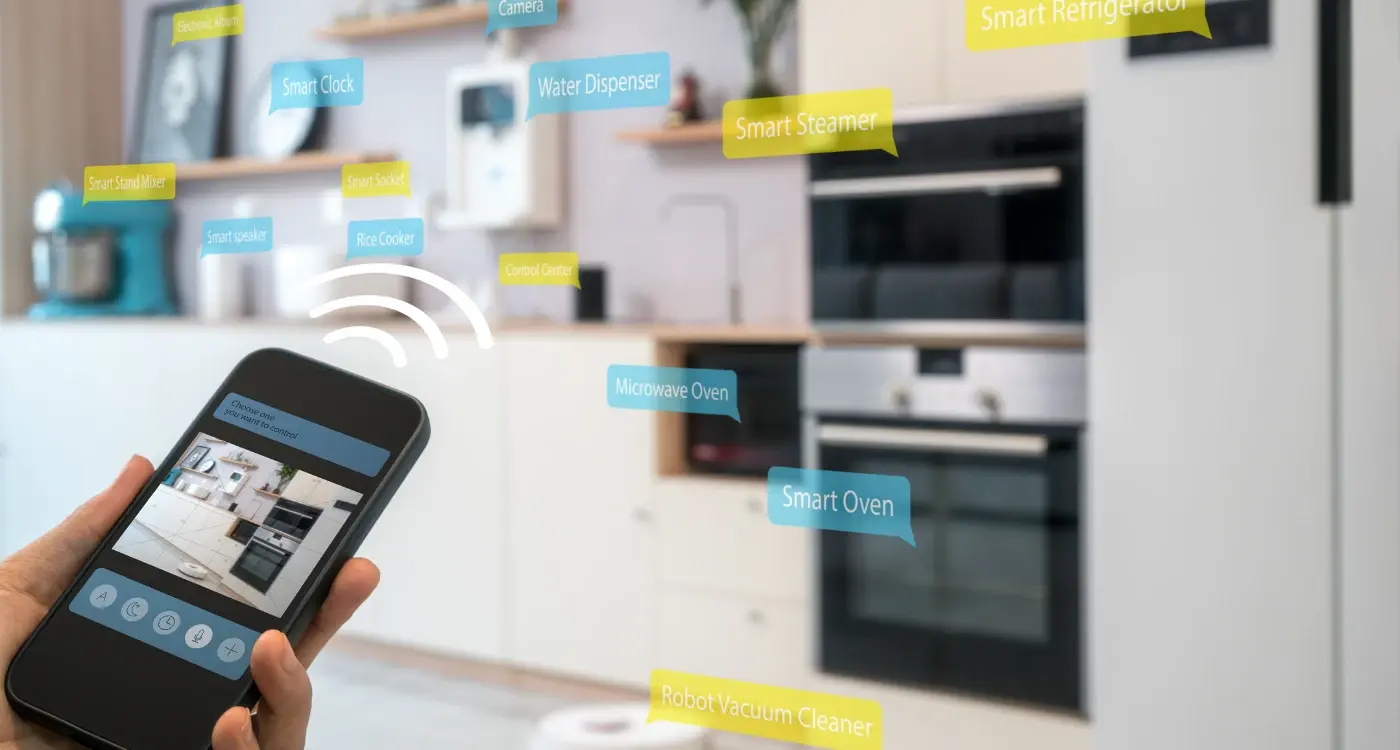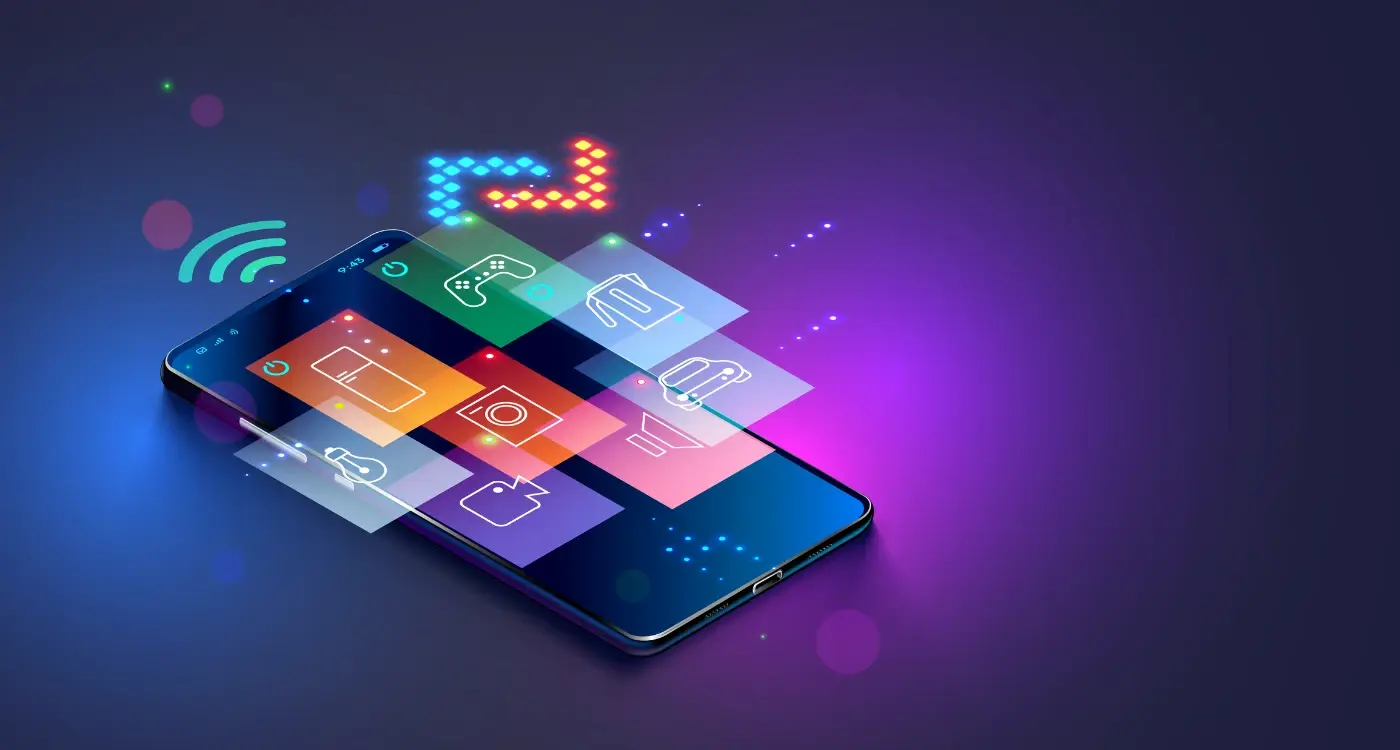Can Older Smartphones Run IoT-Connected Apps?
Do you have a smartphone that's been faithfully serving you for the past few years, but now you're wondering if it can handle the latest IoT-connected apps? You're not alone in this predicament. I've been working with mobile app development for ages now, and this question comes up more often than you'd think. People want to connect their smart home devices, fitness trackers, and other IoT gadgets to their mobile app, but they're unsure whether their trusty older device can cope with the demands.
The truth is, the relationship between older devices and IoT-connected apps isn't straightforward. Your smartphone might look fine on the outside and run your usual apps without trouble, but IoT apps work differently—they need to maintain constant connections, process real-time data, and juggle multiple device communications simultaneously. This creates unique challenges that don't exist with traditional mobile apps.
The complexity of IoT apps means that device requirements go far beyond what most people expect from their regular smartphone usage
Throughout this guide, we'll explore exactly what happens when older smartphones meet the demands of IoT connectivity. From memory limitations to battery drain, operating system compatibility to network challenges, we'll cover everything you need to know. By the end, you'll understand whether your device can handle IoT apps and what options you have if it can't.
What Are IoT-Connected Apps
IoT-connected apps are mobile applications that communicate with Internet of Things devices—smart gadgets that connect to the internet and can be controlled remotely. Think of your smartphone app that controls your smart thermostat, turns on your lights, or monitors your home security system. These apps act as the bridge between you and your connected devices.
The beauty of IoT apps lies in their ability to make our daily lives more convenient and efficient. You can check if you locked your front door whilst sitting at work, adjust your home temperature before you arrive, or even start your coffee maker from bed. The app sends commands through the internet to your smart devices, which then respond accordingly.
Common Types of IoT-Connected Apps
IoT apps come in various forms, each serving different purposes in our connected world:
- Smart home apps for controlling lights, thermostats, and security systems
- Health and fitness apps that sync with wearable devices
- Smart car apps for remote start, location tracking, and diagnostics
- Industrial apps for monitoring equipment and machinery
- Agriculture apps for soil monitoring and irrigation control
- Smart city apps for traffic management and public services
These applications require constant internet connectivity and often need to process real-time data from multiple devices simultaneously. This creates unique challenges when running them on older smartphones, which we'll explore in the following chapters.
Understanding Older Smartphone Limitations
I've watched countless clients get excited about their IoT app ideas, only to discover their target audience is still using older devices that can't handle what they're building. It's a common problem that catches many developers off guard—and it's expensive to fix later.
When we talk about older smartphones, we're looking at devices that are typically three to five years old. These phones face several key challenges when running modern IoT-connected apps.
Hardware Constraints
The biggest issue is raw processing power. Older devices simply don't have the muscle to handle complex IoT communications whilst running other apps. Their processors are slower, they have less RAM, and their graphics chips struggle with modern interfaces.
- Limited RAM causes apps to crash or freeze
- Slower processors create laggy user experiences
- Older Bluetooth and Wi-Fi chips may not support newer protocols
- Storage limitations prevent app updates
Software Barriers
Beyond hardware, older devices often can't update to newer operating systems. This means they miss out on security patches, new features, and compatibility improvements that modern IoT apps rely on.
Always check your target audience's device usage data before finalising your mobile app requirements—you might be surprised how many people are still using older phones.
The good news? Understanding these limitations early helps you make smarter design decisions that work for everyone.
Memory and Processing Power Requirements
Let me be straight with you—IoT apps are hungry beasts when it comes to memory and processing power. After years of building these connected applications, I've learnt that they demand far more resources than your typical mobile app. We're talking about constant data processing, real-time updates, and managing multiple device connections all at once.
Most older smartphones come with 1-2GB of RAM, which was perfectly adequate back in their day. But IoT apps? They need at least 3-4GB to run smoothly without constantly crashing or freezing. The processing power requirements are equally demanding—older processors simply struggle to handle the complex algorithms and continuous background tasks that IoT connectivity requires.
Why IoT Apps Need More Power
Think about what's happening behind the scenes. Your app isn't just displaying information; it's constantly communicating with sensors, processing incoming data streams, and updating multiple interface elements simultaneously. The processor has to juggle encryption, data parsing, and user interface updates all at the same time.
I've seen older devices with 1GB RAM trying to run IoT apps—they'll launch, sure, but within minutes you're looking at sluggish performance, app crashes, and frustrated users. The math simply doesn't add up when you're asking a four-year-old phone to handle today's connected world demands.
Operating System Compatibility Issues
Here's where things get tricky for older devices—and trust me, I've seen this problem countless times when clients ask about supporting legacy smartphones. Your mobile app might be brilliant, but if it's built for the latest operating system, older devices simply won't run it. It's like trying to play a brand new video game on a console from ten years ago.
Most IoT-connected apps require modern operating systems that support advanced features like Bluetooth Low Energy, enhanced security protocols, and background processing capabilities. If your smartphone is running Android 6.0 or iOS 10, you're likely going to struggle with newer IoT apps that demand Android 8.0 or iOS 12 minimum. The operating system acts as the bridge between your app and the device's hardware—without the right version, that bridge doesn't exist.
The biggest challenge isn't just the operating system version; it's the security updates that older systems lack, which many IoT apps refuse to compromise on
Why Developers Drop Support
App developers often abandon support for older operating systems because maintaining compatibility becomes expensive and time-consuming. They'd rather focus their energy on building features for newer systems where most users actually are. This means your older device gets left behind, even if it technically has enough power to run the app.
Network Connectivity Challenges
Network connectivity poses some real headaches when you're trying to run IoT apps on older smartphones. I've seen this countless times with clients who want their apps to work on devices that are five or six years old—the networking hardware just isn't built for the demands of modern IoT applications.
The biggest issue is that older phones often lack support for newer Wi-Fi standards and Bluetooth protocols. Many IoT devices now use Bluetooth 5.0 or Wi-Fi 6, but an older smartphone might only support Bluetooth 4.0 or Wi-Fi 4. This creates a communication gap that can't be bridged through software updates alone.
Common Connectivity Problems
- Dropped connections between the phone and IoT devices
- Slower data transfer speeds causing app delays
- Limited range for wireless connections
- Incompatible security protocols blocking device pairing
- Poor signal strength in areas where newer phones work fine
The networking chips in older devices also struggle with managing multiple IoT connections simultaneously. When you're trying to connect to several smart home devices at once, the phone's radio might become overwhelmed—leading to timeouts and failed connections that make the app feel broken.
Signal processing is another weak point. Older phones often have less sophisticated antennas and weaker signal amplification, which means they'll lose connection to IoT devices much sooner than newer models would.
Battery Life and Performance Impact
Let's be honest—older devices aren't exactly known for their marathon battery life. Add an IoT-connected mobile app into the mix and you've got a recipe for rapid battery drain that'll have you scrambling for a charger faster than you can say "low power mode".
IoT apps are particularly demanding on older smartphones because they need to maintain constant connections to external devices and cloud services. This means your phone's radio components are working overtime, GPS might be running continuously, and the processor is juggling multiple tasks simultaneously. All of this activity translates to serious power consumption that older batteries—which have likely degraded over years of use—simply can't handle efficiently.
Common Performance Issues
When running IoT apps on older devices, you'll likely encounter several performance problems that can make the experience frustrating:
- App crashes during data synchronisation
- Delayed response times when controlling connected devices
- Overheating during extended use
- Sudden shutdowns when battery drops below 20%
- Sluggish interface performance during background updates
Keep your older device plugged in when using IoT apps for extended periods—the constant power draw can cause unexpected shutdowns even when your battery shows 30% or more remaining charge.
Managing the Impact
The good news is that many modern IoT apps include power-saving features specifically designed for older devices. These might include reduced polling frequencies, smart sleep modes, or the ability to limit certain features that aren't absolutely necessary for basic functionality.
Solutions for Running IoT Apps on Older Devices
I've worked with countless clients over the years who want their IoT apps to reach the widest possible audience—and that means making them work on older smartphones. The good news is there are several practical approaches that can help your app perform better on these devices, though you'll need to make some compromises along the way.
Lightweight App Development
The most effective solution is building a stripped-down version of your app that focuses on core functionality only. This means removing fancy animations, reducing image sizes, and simplifying the user interface. Think of it as creating an "essentials only" version that still connects to your IoT devices but doesn't bog down the phone with unnecessary features.
Progressive Web Apps
Another approach that's gaining popularity is developing a progressive web app (PWA) instead of a native mobile app. PWAs run through the web browser but feel like regular apps; they use less memory and processing power whilst still providing real-time IoT connectivity. The trade-off is that you might lose some advanced features, but for basic IoT control and monitoring, they work brilliantly on older devices.
You can also implement smart caching strategies that store frequently used data locally, reducing the need for constant internet requests that drain battery and slow performance. These methods align with modern approaches to handling big data efficiently in cloud-based applications.
If you're considering developing an IoT app that works across different device generations, it's worth understanding how prepared your development team is for IoT challenges. Many developers underestimate the complexity of creating apps that work reliably on older hardware whilst maintaining modern functionality.
Conclusion
After years of working with mobile app development, I can tell you that older devices don't have to be left behind when it comes to IoT-connected apps. Yes, these devices face real challenges—limited memory, outdated operating systems, and slower processors can make things tricky. But with the right approach, many older smartphones can still run IoT apps effectively.
The key is understanding what you're working with. Memory and processing power requirements matter, but they're not insurmountable obstacles. Network connectivity issues can be solved with smart design choices, and battery life concerns can be managed through efficient coding practices. I've seen plenty of successful IoT apps that work brilliantly on devices that are several years old.
What really matters is taking a thoughtful approach to development. This means optimising your mobile app for the device requirements you're targeting, not just the latest and greatest phones. When developers focus on creating lightweight, efficient apps that work well across a range of older devices, everyone wins. Users get to keep their familiar phones longer, and businesses reach a much wider audience. It's a win-win situation that makes good sense for everyone involved.
Share this
Subscribe To Our Learning Centre
You May Also Like
These Related Guides

How Do I Test My App With Different IoT Devices?

What's the Cost of Adding IoT Features to My Mobile App?



